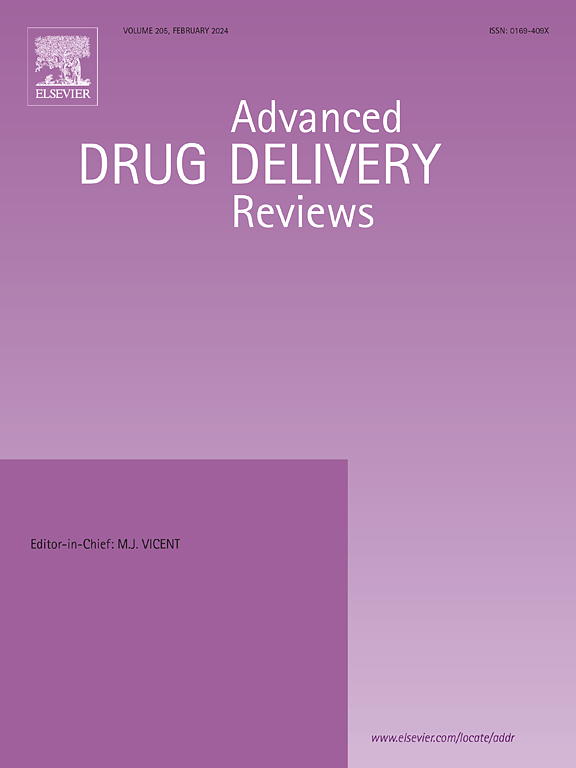Enabling technologies for in situ biomanufacturing using probiotic yeast
IF 17.6
1区 医学
Q1 PHARMACOLOGY & PHARMACY
引用次数: 0
Abstract
Saccharomyces boulardii (Sb) is a Generally Regarded As Safe (GRAS) probiotic yeast currently used to alleviate symptoms from various gastrointestinal diseases. Sb is a promising platform for probiotic and biotherapeutic engineering as it is the only probiotic eukaryote and carries with it a unique set of advantages compared to bacterial strains, including resistance to phage, high protein secretion abilities, and intrinsic resistance to antibiotics. While engineered Sb has not been studied as extensively as its close relative Saccharomyces cerevisiae (Sc), many genetic engineering tools developed for Sc have also shown promise in Sb. In this review, we address recent research to develop tools for genetic engineering, colonization modulation, biomarker sensing, and drug production in Sb. Ongoing efforts, especially those that overcome gut-specific challenges to engineered performance, are highlighted as they advance this chassis as a scalable platform for treating gastrointestinal diseases.


利用益生菌酵母原位生物制造的使能技术
博拉迪酵母菌(Saccharomyces bourlardii, Sb)是一种公认安全的(GRAS)益生菌酵母菌,目前被用于缓解各种胃肠道疾病的症状。Sb是唯一的益生菌真核生物,具有对噬菌体的抗性、高蛋白分泌能力和对抗生素的内在抗性等独特优势,是益生菌和生物治疗工程的一个有前景的平台。虽然工程Sb还没有像其近亲酿酒酵母(Sc)那样得到广泛的研究,但许多针对Sc开发的基因工程工具也在Sb中显示出前景。在这篇综述中,我们介绍了最近的研究,以开发用于Sb基因工程、定殖调节、生物标志物传感和药物生产的工具。他们把这个底盘作为一个可扩展的治疗胃肠疾病的平台。
本文章由计算机程序翻译,如有差异,请以英文原文为准。
求助全文
约1分钟内获得全文
求助全文
来源期刊
CiteScore
28.10
自引率
5.00%
发文量
294
审稿时长
15.1 weeks
期刊介绍:
The aim of the Journal is to provide a forum for the critical analysis of advanced drug and gene delivery systems and their applications in human and veterinary medicine. The Journal has a broad scope, covering the key issues for effective drug and gene delivery, from administration to site-specific delivery.
In general, the Journal publishes review articles in a Theme Issue format. Each Theme Issue provides a comprehensive and critical examination of current and emerging research on the design and development of advanced drug and gene delivery systems and their application to experimental and clinical therapeutics. The goal is to illustrate the pivotal role of a multidisciplinary approach to modern drug delivery, encompassing the application of sound biological and physicochemical principles to the engineering of drug delivery systems to meet the therapeutic need at hand. Importantly the Editorial Team of ADDR asks that the authors effectively window the extensive volume of literature, pick the important contributions and explain their importance, produce a forward looking identification of the challenges facing the field and produce a Conclusions section with expert recommendations to address the issues.

 求助内容:
求助内容: 应助结果提醒方式:
应助结果提醒方式:


